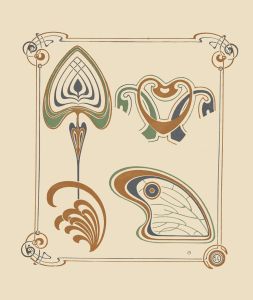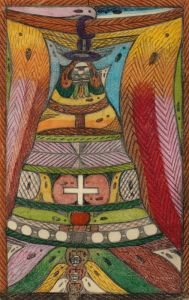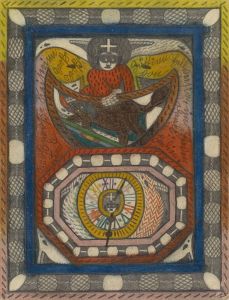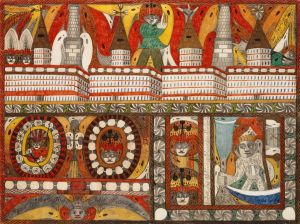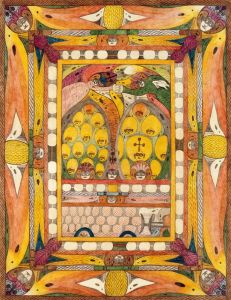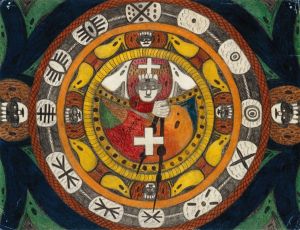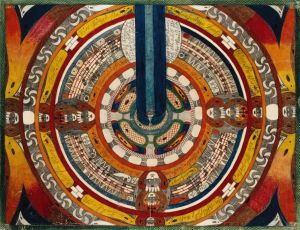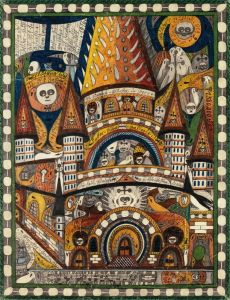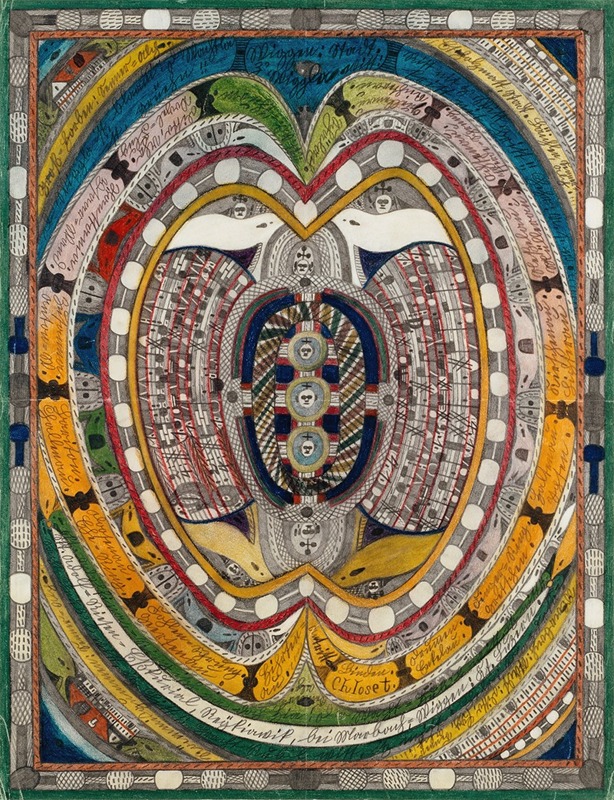
Skt. Adolf=Riesen=Eßkurial, Reykiawik, bei Marbach,=Wiggen; Kt. Luzern
A hand-painted replica of Adolf Wölfli’s masterpiece Skt. Adolf=Riesen=Eßkurial, Reykiawik, bei Marbach,=Wiggen; Kt. Luzern, meticulously crafted by professional artists to capture the true essence of the original. Each piece is created with museum-quality canvas and rare mineral pigments, carefully painted by experienced artists with delicate brushstrokes and rich, layered colors to perfectly recreate the texture of the original artwork. Unlike machine-printed reproductions, this hand-painted version brings the painting to life, infused with the artist’s emotions and skill in every stroke. Whether for personal collection or home decoration, it instantly elevates the artistic atmosphere of any space.
Adolf Wölfli (1864-1930) was a Swiss artist known for his intricate and highly detailed works that often combined elements of drawing, writing, and musical notation. He is considered one of the most important figures in the field of outsider art, a term used to describe art created outside the boundaries of official culture, often by self-taught individuals or those with mental health conditions.
One of Wölfli's notable works is "Skt. Adolf=Riesen=Eßkurial, Reykiawik, bei Marbach,=Wiggen; Kt. Luzern." This piece is part of his larger body of work created during his time at the Waldau Clinic, a psychiatric hospital in Bern, Switzerland, where he was institutionalized for the majority of his life after being diagnosed with schizophrenia.
Wölfli's art is characterized by its complexity and the use of repetitive patterns, symbols, and text. His works often feature fantastical maps, imaginary cities, and autobiographical elements, blending reality with his own elaborate mythological world. "Skt. Adolf=Riesen=Eßkurial, Reykiawik, bei Marbach,=Wiggen; Kt. Luzern" exemplifies these traits, showcasing his unique ability to create densely packed compositions that invite viewers into his intricate and imaginative universe.
The title of the piece reflects Wölfli's tendency to merge real and fictional locations, often incorporating place names and personal references into his work. "Skt. Adolf" likely refers to himself, while the other names may represent a mix of actual and imagined places, creating a sense of a vast, interconnected world. This blending of reality and fantasy is a hallmark of Wölfli's style, making his work both enigmatic and deeply personal.
Wölfli's artistic process was meticulous and labor-intensive. He would often start with a central image or idea and build outwards, filling every available space with intricate details, text, and musical notes. His use of color, line, and form was highly controlled, resulting in compositions that are both visually overwhelming and richly textured.
Despite his isolation and the challenges of his mental health, Wölfli's work gained recognition during his lifetime, thanks in part to the efforts of Dr. Walter Morgenthaler, a psychiatrist at the Waldau Clinic who published a monograph on Wölfli in 1921. Morgenthaler's book, "Ein Geisteskranker als Künstler" ("A Psychiatric Patient as Artist"), brought Wölfli's work to the attention of the broader art world and helped establish his legacy as a pioneering figure in outsider art.
Today, Wölfli's works are held in high regard and are included in the collections of major museums and galleries around the world. His art continues to fascinate and inspire, offering a unique window into the mind of an artist who, despite his circumstances, created a vast and compelling body of work that challenges conventional notions of art and creativity.
"Skt. Adolf=Riesen=Eßkurial, Reykiawik, bei Marbach,=Wiggen; Kt. Luzern" stands as a testament to Wölfli's extraordinary vision and his ability to transform his inner world into a complex and captivating artistic expression.





